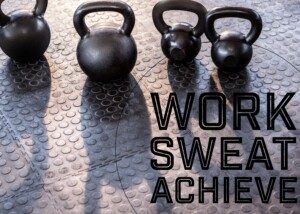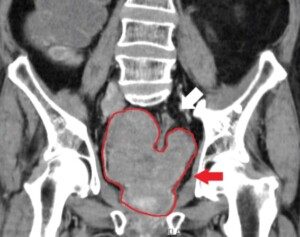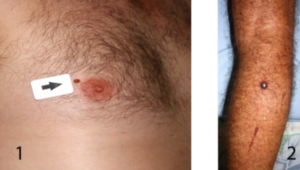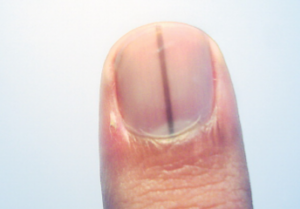If you struggle with executive function, immediate memory tasks or processing speed, five minutes of exercise can improve your brain function.
Taking a brisk walk, doing some simple yoga or going up and down on a step while holding light weights — for five minutes — can do more than just improve physical fitness.
Five minutes of extra activity can also help keep the brain sharp even if you’re already “up there in years.”
Research from the University of South Australia, in collaboration with the AdventHealth Research Institute in the U.S., shows that moderate-to-vigorous physical activity is linked to better brain function in older adults.
The study found that this type of exercise — which gets your heart rate and breathing up — is connected to improvements in processing speed, working memory and executive function.
These areas of mental ability are key for tasks such as focusing attention, remembering short-term information and multitasking.
The study showed that even small amounts of such activity made a difference.
People who went from doing none to just five minutes a day already saw gains.
How the Study Was Done
Researchers analyzed data from 585 participants between 65 and 80 who took part in the U.S.-based IGNITE trial.
They looked at how time spent sleeping, sitting still, doing light activity or engaging in more intense physical activity affected performance on cognitive tests.
The Results
The results showed a clear pattern: More time spent in higher intensity movement was associated with better thinking skills.
Less of this kind of activity, on the other hand, was linked to weaker scores.
The findings suggest that keeping physically active in ways that make you breathe harder and your heart beat faster could help support clearer thinking and better mental function in later life.
Dr. Maddison Mellow, one of the researchers, explains that daily routines are made up of three main categories: sleep, being still and physical movement.
How time is divided among these can affect mental performance.
For example, a good night’s sleep might give someone the energy to be more active the next day, and being more active can also lead to better sleep.
The study found that moderate-to-rigorous physical activity was the most closely tied to improved brain function.
Specifically what kind of activity are we talking here?
Whether or not movement is light, moderate or vigorous has more to do with exertion level than type of activity.
The study mentioned activity such as aerobic workouts, swimming laps and cycling.
An aerobic (or “cardio”) session, as well as lap swimming and pedaling, can be light in exertion, medium or intense; it’s up to you!
And how do you know it’s vigorous or intense?
Think of a scale from 1 to 10, where 1 is how you feel soaking in a hot tub, and 10 is how you’d feel if trying to outrun a hungry lion.
Moderate activity would be rated in the middle somewhere, like a 4 to 6 – whether it’s walking, jogging, pedaling, participating in a fitness class or hiking.
An intense or vigorous rating would be 7 to 9. Realistically, nobody hits a 10 because, well, when’s the last time you were running from a wild salivating animal or trying to escape from flying grenades?
Another way to look at this is as follows: Medium exertion means you can talk fairly well but can’t sing during the activity.
High exertion means that, at a minimum, you have difficulty carrying on a conversation. An observer will easily notice this.
In summary, any activity that increases heart rate and breathing should be your goal for sharper cognition.
People who engaged in this kind of movement showed better scores for how quickly their brains processed information, how well they could organize tasks and how much short-term information they could retain.
You Have Only 24 Hours a Day: Use Them Wisely
The paper points out that the way people divide their time throughout the day has real consequences.
With only 24 hours available, the choice to be active or inactive can influence how well the brain functions.
Although the results are promising, the researchers note that their findings are based on a single point in time.
More studies are needed to see how activity levels influence brain health over many years.
Nevertheless, even a few minutes of exercise that gets the heart pumping can make a difference.
Don’t Make this Mistake

Freepik/pressfoto
Don’t assume that you’re already getting in that five minutes because you do at least five minutes a day of housework.
The key is to add five minutes of activity that’s not activity that you already do. It has to be extra – a variable in your day.
In addition to the examples of activities already cited, other five-minute examples include nonstop walking up and down a staircase, nonstop lunge varieties, a nonstop dance routine, and bits and pieces of jumping versions over a five-minute period of time.
Each jumping segment (e.g., jumping jacks or jumping with your feet together – just a tiny bit off the floor) can last 10 or more seconds. Five minutes of nonstop jumping is too much for a sedentary person.
How to Add 5 Minutes of Daily Activity to Improve Blood Pressure
 Lorra Garrick is a former personal trainer certified by the American Council on Exercise. At Bally Total Fitness, where she was also a group fitness instructor, she trained clients of all ages and abilities for fat loss and maintaining it, muscle and strength building, fitness, and improved cardiovascular and overall health.
Lorra Garrick is a former personal trainer certified by the American Council on Exercise. At Bally Total Fitness, where she was also a group fitness instructor, she trained clients of all ages and abilities for fat loss and maintaining it, muscle and strength building, fitness, and improved cardiovascular and overall health.
.










































